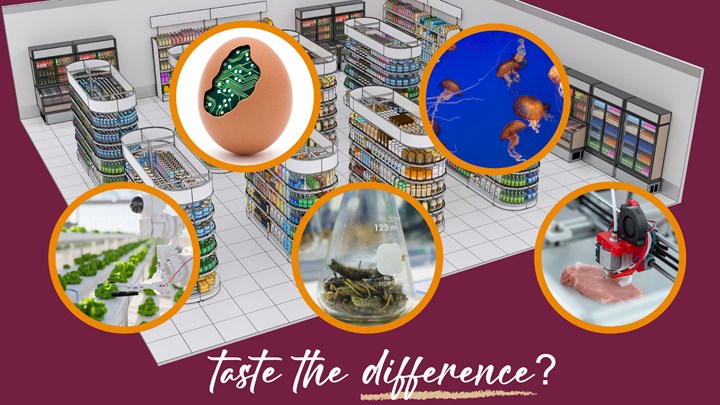Source: http://bmj.bmjjournals.com/cgi/content/full/330/7487/347?ehom
Zinc deficiency: what are the most appropriate interventions?
Roger Shrimpton, honorary senior research fellow1, Rainer Gross, chief2, Ian Darnton-Hill, senior adviser micronutrients2, Mark Young, senior adviser Roll Back Malaria3
1 Centre for International Child Health,
Correspondence to: R Shrimpton [email protected]
|
|
Introduction |
|
|
Zinc deficiency is one of the ten biggest factors contributing to burden of disease in developing countries with high mortality.1 Since the problem was highlighted in the World Health Report 2002, calls have increased for supplementation and food fortification programmes.2 3 Zinc interventions are among those proposed to help reduce child deaths globally by 63%.4 Populations in South East Asia and sub-Saharan
Improving zinc intakes through dietary improvements is a complex task that requires considerable time and effort.7 The case for promoting the use of zinc supplements and for fortifying foods with zinc, especially those foods commonly eaten by young children, therefore seems strong. However, global policies or recommendations for zinc interventions are few. The World Health Organization recommends zinc only as a curative intervention, either as part of the mineral mix used in the preparation of foods for the treatment of severe malnutrition, or more recently in the treatment of diarrhoea.8 We review current evidence that improving zinc intake has important preventive or curative benefits for mothers and young children and examine the programme implications for achieving this in developing countries.
|
Sources and selection criteria |
|
|
We searched PubMed and the databases of WHO and Unicef for information on zinc supplementation and zinc fortification. We examined existing reviews of the evidence for benefits of zinc supplementation and zinc fortification and recent papers reporting the results of randomised controlled trials. These findings were further considered in the light of international policy recommendations for supplementation and fortification of other micronutrients such as iodine, iron, and vitamin A and reviews of experience in the implementation of these programmes.
|
Zinc supplementation |
|
|
Strong evidence exists that zinc supplements improve the prognosis of children being treated for diarrhoeal disease. A pooled analysis of randomised controlled trials of therapeutic zinc in children with diarrhoea showed that children with acute diarrhoea given zinc supplements had a 15% lower probability of continuing diarrhoea on a given day compared with those in the control group; children with persistent diarrhoea had a 24% lower probability of continuing diarrhoea. In addition, children with persistent diarrhoea had a 42% lower rate of treatment failure or death if given zinc supplements.9
|
The most effective way to deliver zinc supplements in diarrhoeal disease control programmes is not yet clear. Since zinc supplementation reduces the duration and severity of diarrhoeal episodes it might be beneficial to add zinc to oral rehydration solution; one of the shortcomings of oral rehydration therapy is that the frequency and volume of stools is not reduced. However, studies of the efficacy of including zinc in oral rehydration solutions are not conclusive.10 In addition, many countries promote the use of home made fluids.
WHO and Unicef propose to distribute blister packs of 10 dispersible tablets of 20 mg zinc for daily consumption as the part of the treatment of diarrhoea. The use of zinc as an adjunct therapy significantly improves the cost effectiveness of standard management of diarrhoea.11 Achieving and maintaining high levels of coverage of current interventions for diarrhoeal disease, such as oral rehydration therapy, are already proving difficult.12 The challenge of promoting zinc supplements to treat diarrhoea is therefore considerable.
Preventive action
Regular zinc supplements have been shown to prevent disease. Supplementation seems to be most beneficial in children with lower birth weights and those with stunted growth or zinc deficiency. The supplementation of low birthweight infants in
Zinc supplementation may also prevent failure of child growth, although the evidence is weaker than for prevention of disease. A meta-analysis of randomised controlled trials of the effects of supplemental zinc on growth of prepubertal children found that height and weight growth were only moderately improved, and the greatest responses were shown by children who were initially underweight or stunted.16 Zinc supplementation trials in infants with birth weights > 2.5 kg have shown little effect on preventing growth faltering in the second half of infancy in Indonesia.w5 w6 In Ethiopia, zinc supplements increased length growth of stunted infants, but these infants were not selected on birthweight criteria.w7 Trials in infants from birth to 6 months in Bangladesh showed growth effects only in those with initial low zinc status.w8
|
Administering supplements
Consensus is growing that zinc should not be promoted as a single nutrient supplement for preventing zinc deficiency in young children and their mothers. This is because many people have multiple micronutrient deficiencies. Anaemia is a marker for both iron and zinc deficiency. The use of iron and folate supplements to treat and prevent anaemia during pregnancy and lactation has been recommended for three decades,w9 and iron for the treatment of anaemia in young children for almost a decade.w10 Progress in reducing anaemia in developing countries has, however, been disappointing,w11 largely because of poor execution of programmes, especially the inadequate preparation of health staff and systems to deliver the supplements.17 w12 In addition, only a half of anaemia is thought to be solely due to iron deficiency; other micronutrients, such as vitamin A and vitamin C, are implicated as well as infection and blood loss.w13 The diets of anaemic women in developing countries are more often deficient in micronutrients than they are deficient in energy.18 w14 w15 Infant diets also commonly have inadequacies in zinc and iron as well as B vitamins.19
Zinc, iron, vitamin A, and copper all potentially interact and interfere with each other's absorption and metabolism when used as single nutrient supplements.20 21 w16 Trials are ongoing of a multiple micronutrient supplement formulated by WHO, Unicef, and United Nations University for mothers during pregnancy and lactationw17 w18; this supplement could eventually replace iron and folate if proved effective. Various trials of multiple micronutrients as preventive supplements during infancy and childhood have been carried out or are under way.w19 w20 w21 w22 The results of this research need to be brought together to determine whether to promote multiple micronutrient supplementation programmes during pregnancy, lactation, and infancy.
|
Zinc fortification |
|
|
The case for promoting fortification of foods with zinc in developing countries may seem strong, but experience of how best to do it is limited and it may not be a suitable approach in many countries. Most experience in food fortification comes from industrialised countries, where few governments mandate zinc fortification. Food fortification with micronutrients in developing countries is largely limited to iodine, with over 70% of households consuming adequately iodised salt in 2000 compared with less than 20% in 1990.w23 Developing countries in the Latin American region have the greatest experience of iron fortification, which is mandated for wheat flour in most of the region, although the effectiveness of these interventions has not been verified.w24 w25 Research into zinc fortification either as a single nutrient or as part of a multimicronutrient approach is incipient.22 Innovative approaches will be needed to achieve fortification of foods with zinc in developing countries with the highest mortalities. These include the development of small scale community approaches for multiple micronutrient fortification, using hammer mills, and the use of condiments, fish paste, and bouillon cubes.w26 w27
|







Comments
your voice counts
There are currently no comments on this post.
Your voice counts
We welcome your comments and are very interested in your point of view, but we ask that you keep them relevant to the article, that they be civil and without commercial links. All comments are moderated prior to being published. We reserve the right to edit or not publish comments that we consider abusive or offensive.
There is extra content here from a third party provider. You will be unable to see this content unless you agree to allow Content Cookies. Cookie Preferences